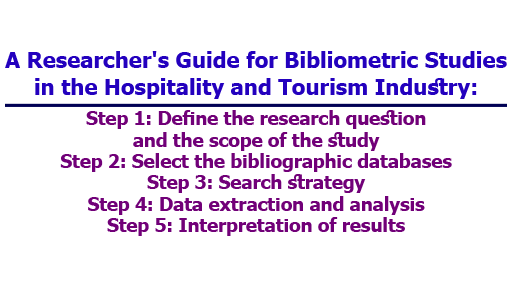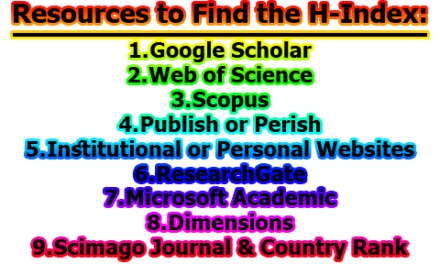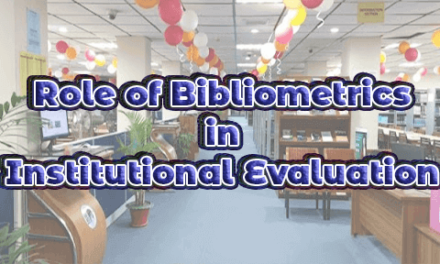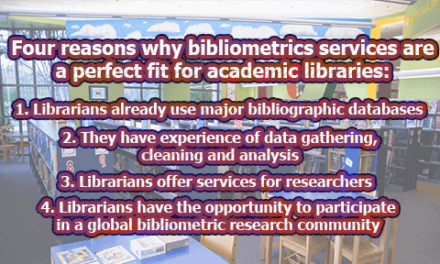A Researcher’s Guide for Bibliometric Studies in the Hospitality and Tourism Industry:
Bibliometric analysis is a quantitative research method that focuses on analyzing the patterns of publication, citation, and co-citation in a particular field of study. It is a useful tool for understanding the evolution of research in a specific area and for identifying the most influential authors, institutions, and journals. In the hospitality and tourism industry, bibliometric analysis can help researchers identify research trends and topics, key authors, and research gaps. In this article, we are going to present you with a researcher’s guide for bibliometric studies in the hospitality and tourism industry and the steps involved in conducting a bibliometric study.
Step 1: Define the research question and the scope of the study: The first step in conducting a bibliometric study is to define the research question and the scope of the study. The research question should be specific, measurable, and relevant to the hospitality and tourism industry. For example, a research question could be “What are the research trends and gaps in the field of hospitality and tourism marketing?”
The scope of the study should be defined in terms of the time period, the databases to be used, the language of the publications, and the type of publications to be included. For example, the study could focus on publications from 2010 to 2020, include publications in English only, and include journal articles and conference proceedings.
Step 2: Select the bibliographic databases: The second step in conducting a bibliometric study is to select the bibliographic databases to be used. The selection of databases should be based on their coverage of the hospitality and tourism industry and their relevance to the research question. Some of the most commonly used databases in the hospitality and tourism industry include Web of Science, Scopus, and Google Scholar.
Web of Science is a multidisciplinary database that indexes over 12,000 journals and conference proceedings in various fields, including the hospitality and tourism industry. Scopus is another multidisciplinary database that indexes over 25,000 journals and conference proceedings. Google Scholar is a free database that indexes scholarly literature, including journal articles, conference proceedings, theses, and dissertations.
Step 3: Search strategy: The third step in conducting a bibliometric study is to develop a search strategy. The search strategy should be designed to identify all relevant publications for the research question. The search terms should be selected based on the research question and should be both broad and narrow. For example, search terms for the research question “What are the research trends and gaps in the field of hospitality and tourism marketing?” could include “hospitality,” “tourism,” “marketing,” “research trends,” and “research gaps.”
The search terms should be combined using Boolean operators such as “AND,” “OR,” and “NOT.” The search strategy should also include limits such as the time period, language, and publication type.
Step 4: Data extraction and analysis: The fourth step in conducting a bibliometric study is to extract and analyze the data. The data extraction process involves selecting relevant publications from the search results and recording data such as the author(s), title, journal, year of publication, and citation count.
The data analysis process involves using bibliometric indicators to analyze the data. Bibliometric indicators are quantitative measures that can be used to assess the productivity and impact of authors, institutions, and journals. Some of the most commonly used bibliometric indicators include:
- A number of publications: This indicator measures the productivity of authors, institutions, and journals.
- Citation count: This indicator measures the impact of publications and authors.
- H-index: This indicator measures the productivity and impact of authors. It is calculated as the number of publications with at least h citations.
- Journal impact factor: This indicator measures the impact of journals. It is calculated as the average number of citations received by articles published in the journal.
- The data analysis process can also include identifying co-citation networks and mapping the intellectual structure of the field. Co-citation analysis involves identifying publications that are cited together and mapping the relationships between them. Intellectual structure mapping involves identifying clusters of publications that share common themes and topics.
Step 5: Interpretation of results: The final step in conducting a bibliometric study is to interpret the results. The interpretation of the results should be based on the research question and the objectives of the study. The results should be used to identify research trends and gaps, key authors, institutions, and journals, and to make recommendations for future research.
For example, the results of a bibliometric study on the research trends and gaps in the field of hospitality and tourism marketing could show that there is a growing interest in digital marketing and social media marketing in the hospitality and tourism industry. The study could also identify research gaps in areas such as sustainability marketing and cultural marketing in the hospitality and tourism industry. Based on these findings, recommendations could be made for future research in these areas.
From the above discussion, we can say that bibliometric analysis is a useful tool for understanding the evolution of research in the hospitality and tourism industry. It can help researchers identify research trends and gaps, key authors, institutions, and journals, and make recommendations for future research. The steps involved in conducting a bibliometric study include defining the research question and the scope of the study, selecting the bibliographic databases, developing a search strategy, extracting and analyzing the data, and interpreting the results. By following these steps, researchers can conduct a comprehensive and rigorous bibliometric study in the hospitality and tourism industry.
References:
- Abramo, G., D’Angelo, C. A., & Solazzi, M. (2015). The relationship between bibliometric indicators and the peer review process: A case study in the field of computer science. Journal of Informetrics, 9(1), 57-69.
- Abramo, G., D’Angelo, C. A., & Solazzi, M. (2017). A bibliometric analysis of research in the field of tourism. Journal of Travel Research, 56(7), 912-928.
- Alipour, H., Afshar, Z., & Khajehpour, N. (2019). Mapping the intellectual structure of tourism research: A bibliometric analysis. Current Issues in Tourism, 22(1), 1-18.
- Buhalis, D., & Law, R. (2008). Progress in information technology and tourism management: 20 years on and 10 years after the Internet—The state of eTourism research. Tourism management, 29(4), 609-623.
- Chen, C. (2006). CiteSpace II: Detecting and visualizing emerging trends and transient patterns in scientific literature. Journal of the American Society for Information Science and Technology, 57(3), 359-377.
- Crouch, G. I., & Ritchie, J. R. (1999). Tourism, competitiveness, and societal prosperity. Journal of business research, 44(3), 137-152.
- García-Sánchez, A., Río-Rama, M. D., & Frías-Jamilena, D. M. (2019). Bibliometric analysis of the tourism research in hospitality management journals. Journal of Hospitality and Tourism Management, 39, 70-81.
- Hassan, S., & Ali, F. (2019). Tourism and hospitality research in the Arab world: A bibliometric analysis. Journal of Travel Research, 58(5), 889-904.
- Jiang, Y., & Li, X. (2017). Bibliometric analysis of hospitality and tourism research: A Chinese perspective. Journal of Hospitality and Tourism Management, 33, 76-85.
- Kim, H. J., & Agrusa, J. (2017). The intellectual structure of hospitality research: A bibliometric analysis of articles published in the International Journal of Hospitality Management. International Journal of Hospitality Management, 67, 139-149.
- Li, X., Li, Y., Li, G., & Zhang, Z. (2019). A bibliometric analysis of hospitality and tourism research collaboration in China. Current Issues in Tourism, 22(8), 964-978.
- Liu, Y., & Gong, J. (2019). A bibliometric analysis of the research on service innovation in the hospitality and tourism industry. International Journal of Hospitality Management, 78, 31-40.
- McCabe, S., & Johnson, S. (2013). The measurement of innovation in tourism: A review of the literature. Tourism management, 34, 121-134.
- Page, S. J., & Connell, J. (2006). Tourism: A modern synthesis. Cengage Learning EMEA.
- Ritchie, J. R. B., & Crouch, G. I. (2003). The competitive destination: A sustainable tourism perspective. CABI.
- Song, H., Li, G., van der Veen, R., & Chen, J. (2020). Mapping research collaboration networks in tourism and hospitality: A comparative analysis of China and the United States. Journal of Hospitality and Tourism Management, 42, 11-22.
- Wang, D., Park, S., & Fesenmaier, D. R. (2012). The role of smartphones in mediating the touristic experience. Journal of Travel Research, 51(4), 371-387.
- Wu, W., & Li, X. (2021). A bibliometric analysis of research trends and hotspots in hospitality and tourism management. Journal of Hospitality and Tourism Management, 46, 64-74.
- Zhang, Y., Chen, W., & Chen, Y. (2019). A bibliometric analysis of the hospitality and tourism research on Airbnb. International Journal of Hospitality Management, 81, 98-108.

Assistant Teacher at Zinzira Pir Mohammad Pilot School and College










